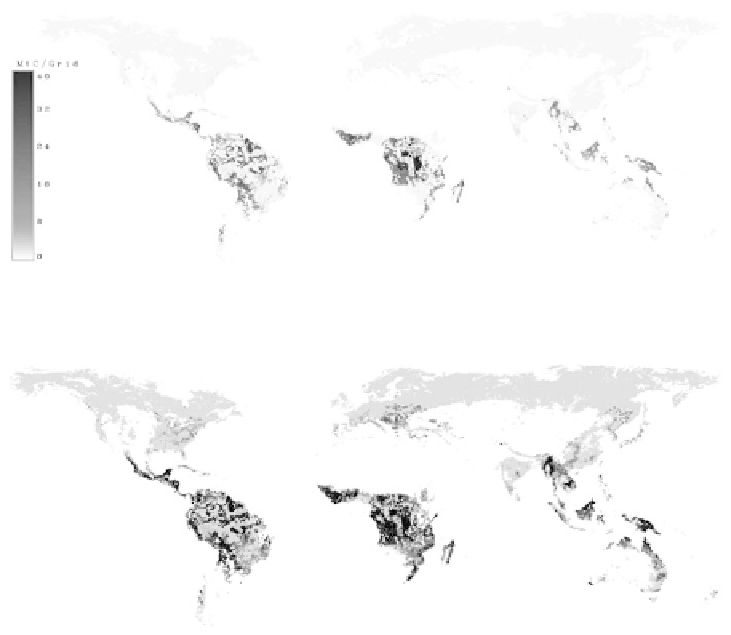Geoscience Reference
In-Depth Information
Figure 19.
Effectiveness (Corruption). Countries with high values of corruption are marked in red,
moderate countries in yellow and low values in green.
Figure 20.
Share of long living products. Countries which use their wood mainly for fuelwood are
marked in blue, those who use it for sawn-wood are in green.
CONCLUSIONS
Avoiding deforestation requires financial mechanisms that make retention of forests
economically competitive with the currently often preferred option to seek profits
from other land uses. According to the model calculations, even relatively low carbon
incentives of around 6 $/tC/5 year, paid for forest carbon stock retention or carbon
taxes of 12 $/tC would suffice to effectively cut emissions from deforestation by half.
Taxes revenues would bring about annual income of US$6 billion in 2005 to US$0.7
billion in 2100. The financial means required for incentives are estimated to range
from US$3 billion to US$ 200 billion per year, depending on the design of the avoided
deforestation policy. Our scenario, where incentives are payed in regions where de-
forestation will appear and the payment has an effect, estimates the necessary funds
to cut emissions from deforestation in half in the magnitude of some US$ 33 billion
per year, without including costs for transaction, observation, and illegal logging pro-
tection. Increasing the value of forest land and thereby make it less easily prone to
deforestation would act as a strong incentive to increase productivity of agricultural
and fuelwood production.

















